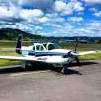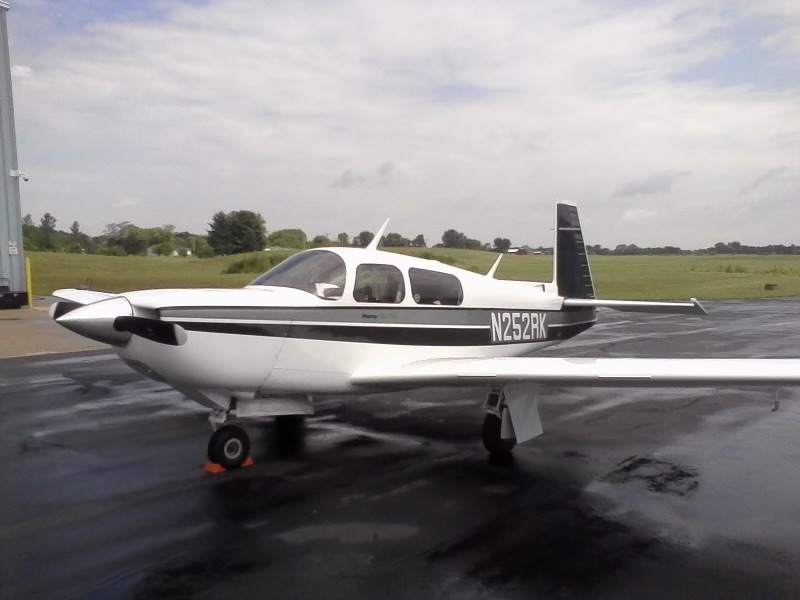-
Posts
5,685 -
Joined
-
Last visited
-
Days Won
28
Content Type
Profiles
Forums
Blogs
Gallery
Downloads
Media Demo
Events
Everything posted by Ragsf15e
-
With a turbo you can’t currently use the timing advance function, but yeah, it’s approved for most engines/airframes. Maybe they’ll eventually get advanced timing on turbos?
-
Yeah, I agree the big original gages are nice as long as you’re prepared to maintain them. The 800 you’ve got provides extra capability in that it can record and shows all the chts/egts. I definitely don’t fault that choice. I guess I think the 900/930 should be more reliable than the factory originals in the long run. My 930 certainly has. I’ve read the comments about people having problems with the “autodim”, but I just wanna think the digital tech should last longer and be supported longer. All that said, I didn’t have to pay for mine, the previous owner did. I’m not sure, but I could see myself doing what you did and saving the $$. I suspect if we all had money to burn, we’d have a couple 10” screens with flight and engine information, a touchscreen gps and a digital autopilot. Since we don’t have that kind of cash, adding the usefulness of a Jpi 800 while having to maintain the factory gages and saving one years worth of 100LL seems reasonable.
-

NEW Alternator issue as older one. Bummer...
Ragsf15e replied to ilikethewoods's topic in Vintage Mooneys (pre-J models)
Well yes, that’s definitely true. I was hoping you wouldn’t take offense to what I wrote because your guidance on this board has always been spot on and backed up by manuals, diagrams, and regulations. Just so you know, that’s not exactly typical. Heck, even your magnetic paperclip trick to check the alternator is more than my mechanic did before replacing it and I consider him to be fairly “by the book”. I think diagnosing electrical systems can seem like a dark art. -
But if your original gages go on the fritz, you’re not...
-

NEW Alternator issue as older one. Bummer...
Ragsf15e replied to ilikethewoods's topic in Vintage Mooneys (pre-J models)
Yeah, I think that’s common. A lot of mechanics see electrical problem and go straight to the alternator. It’s relatively easy to wrench and doesn’t require any further troubleshooting to track down a part for replacement... there it is, replace it. Unfortunately, I think it’s more common that there’s another culprit, especially on the older airplanes because there are lots of corroded connections, switches and circuit breakers. -

NEW Alternator issue as older one. Bummer...
Ragsf15e replied to ilikethewoods's topic in Vintage Mooneys (pre-J models)
In fact, the belt or a corroded connection (or circuit breaker) are most likely. Unfortunately, tracking down the actual culprit corroded connection in 169 miles of wiring stuffed into a 50 year old volkswagon with wings is the difficult part. That being said, changing from the old mechanical regulator to a digital (plane power or zeftronics) isn’t terrible. It’s ~$300 and easy to do. Should last and be reliable too. Checking input voltage and output (field) voltage from the regulator is definitely part of the troubleshooting. -
Seems like a roll of the dice. My coverage is the same except $85k hull. Interesting. Parker got me the best deal possible. The industry is changing!
-
This is real! 4500 hour ATP, 1968 F, $1038 last year, $1500 this year. No claims, no changes. I’m no mathologist, but that like 45% higher, no?!
-

NEW Alternator issue as older one. Bummer...
Ragsf15e replied to ilikethewoods's topic in Vintage Mooneys (pre-J models)
The two guys above have good questions for you. Unlike cars, the alternator in your airplane is likely externally controlled by a regulator. The old (original) regulators are mechanical. The newer ones are digital. The old ones can fail in weird ways. I’ve been told (by zeftronics tech support) that the digital ones usually either work or don’t work, there’s not a lot of weird failures. What year is your airplane? Electrical problems are kind of difficult to nail down but there are good troubleshooting guides on both the zeftronics and plane power sites. its common (and expensive) to throw parts at these issues before knowing exactly where the problem is. I did both an alternator and regulator before I quit letting my IA troubleshoot it and read the zeftronics guide myself. I then narrowed it down and replaced a $25 circuit breaker... after $1000 of alternator and regulator that hadn’t fixed anything. So circuit breakers wear out, corrosion causes resistance at contacts throughout the airplane, and the field wire lives a hard life between your regulator and alternator (via the master switch). you need a voltmeter and a troubleshooting guide. -
All my speed tests are done wide open throttle, ram on, 2500 rpm. What you’re saying definitely makes sense. I start to see the improvement (slight) above about 8000’ or so and it seems to increase with altitude. I need more data to say it’s real though.
-
The MP hookup is pretty simple though. The battery is more work unless you’ve got your battery in the front still. I can see your point if you’re not going to run lop, but it’s probably worth installing the MP just to see if it helps it run lop - doesn’t mean you have to fly like that all the time.
-

Removing the Windshield mounted OAT gauge
Ragsf15e replied to redcatcher27's topic in Vintage Mooneys (pre-J models)
I removed mine about 5 years ago. My mechanic used clear “packing” tape on the inside (I’m sure it was STC’d, PMA’d, and TSO’d aviation packing tape), maybe 1” diameter around the 1/2” diameter hole. Then he filled the outside with silicone. It’s not clear, but it’s not noticeable way up there either. That’s lasted 5 years with no problem. I don’t take any special precautions when cleaning or flying in rain. -
Interesting, did you change the wiring so it starts on both mags? Normally they only start on the left mag. Ive had to get pretty high altitude to notice the tiny bit of speed difference, and it’s only lop.
-
Same reason for my install.
-
Mike, I wish I had a proper statistical method for figuring the error bars, but I don’t. I do know that my gps GS will slowly fluctuate +\-2 knots or so over a couple minutes even if I’ve stabilized so I just picked that. Sorry I don’t have a better answer. Rags
-
Yeah it’s definitely smoother lop. I think you have to be pretty high altitude to see the benefits from advancing timing. Not sure you’ll go that high on a short Texas leg like that, but try 10,500’ one day. It’s definitely advanced timing there. Also, if you’re going further lop than before, you might save fuel, but probably won’t be faster. My speed runs were on the same lop setting (15 degrees). Only thing I don’t like is my inability to do an inflight mag check without a bang/afterfire.
-
Let me start by saying I'm not sure the data is clear enough to make any broad conclusions about the Surefly Mag on my M20F. However, I'll post some graphs I made showing LOP TAS and LOP Mpg from before and after installation. The "before" data are from speed runs from the last 3 years. The "SF" data are all from this winter. The power settings were all ~15 LOP except at very low (~6,000') where I needed to be a bit leaner. The weights and CG aren't necessarily the same, so that may cause problems. All the data is from my WAAS GPS, JPI 930 and 3 way speed runs to compute TAS. My own conclusions - It starts almost like a car. Runs smoother (slightly). Could go deeper LOP if I wanted (fuel savings?). And maybe, just maybe, the data indicates a few more knots when LOP at higher altitudes. ROP looks just about like no change from before the SF Mag. Thoughts? LOP TAS vs Density Alt lop TAS.pdf LOP Mpg vs Density Altitude lop mpg.pdf ROP TAS rop TAS.pdf ROP Mpg rop mpg.pdf
-
That switch panel is nice looking. In my opinion, I wouldn’t go to much (or any) trouble rewiring my system to start on both mags. The Slickstart or SF both start really well by themselves (SF is close to a car - smooth). If one of them isn’t working or can’t start the engine by itself as designed, I think I don’t want to fly the airplane until the ignition system is working properly. There is one very minor drawback to the SF being on the left mag - with a dead battery you lose the ability to hand prop it. My limbs and I made peace with that when I had the SF installed.
-

Checking Cam Lobe Condition
Ragsf15e replied to corn_flake's topic in Vintage Mooneys (pre-J models)
Don’t plan on a prop strike, but if it happened, and they are required to be replaced, insurance should take care of that. -
Are you going to rewire your starter switch to prevent it grounding your right (SF) mag during start?
-
Yeah Boundary Cty, Shoshone, and Lewiston are my go to fuel stops from Spokane. You can also try Willard where there’s an Ag setup with a self serve. However, it doesn’t take credit cards, you just pump the fuel and then write the amount and your credit card number on the clipboard. Eventually they’ll charge you. I love GA!
-
The Surefly is great. Hardest part for an F is taking out enough of the interior to run a power line directly to the battery. Otherwise the Surefly is good. Sim 4N is the correct choice. You’ll be able to remove the left mag and sos. Your mechanic will have to hook it up to manifold pressure, but that’s not hard. My engine starts almost like a car and seems to have slightly more power lop at higher altitudes. Slightly increased speed lop and 10,000’ up.
-

Aspen 1000 - Intermittent Glide Slope Indication!
Ragsf15e replied to N205S's topic in Avionics/Panel Discussion
If the 440 were to downgrade after the faf due to loss of waas for example, it won’t come back to lpv during the same approach. It shouldn’t cycle quickly between lpv/lnav at all. Sounds like the 440 was happy with the lpv solution the whole time. Communication or display problem? If this happened above LNAV mins you could use those and transition to a non precision approach, or go missed. Below LNAV mins you’d need to execute your missed approach (or land if visual with the runway). I’d be pretty careful continuing to LNAV mins if my display was suddenly questionable after the faf and I didn’t know why. -
Remember, it’s not your airplane yet... you really want your prebuy mechanic to be anal and thorough! If the deal is structured properly, the seller should be paying for airworthiness issues, not you. If your mechanic does a half ass job and your next annual costs $13,249, then you’ll wish you had a more thorough prebuy! A cylinder wouldn’t be the end of the world for me either, but would definitely cause me to get the price reduced accordingly.
-
I guess I’m kinda happy to see everyone has a different solution that’s ok. The installation manual sort of leaves that open. I had a Precise Flight backup vacuum that I had removed (along with primary vac) at the same time I installed the SF. The standby vac connects to manifold pressure near the bottom of the intake tube on #4. My mechanic originally said we’d have to send out the intake tube for welding when we removed the standby vac tubing, but then he decided he could use that as our MP source for the SF. Works perfectly.





